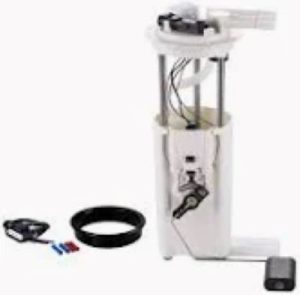Logically, the pump location can be severe and determine how well it works or doesn't suffer from vapor lock or fuel starvation. The fuel in your tank has its own set of cooling properties to help in-tank fuel pumps, which being submerged by design are effectively cooled all the time. This saves wear on the pump, reducing the risk of overheating up to 30%. For example, the fuel pump in a contemporary car such as a Toyota Camry is located inside the tank where its bathed in fuel which helps to cool it down and keep it working properly when operating in hot conditions.
Meanwhile, inline or external fuel pumps that mount externally to the fuel tank can be exposed to heat. The pumps generally need a secondary cooling solution or shield, especially in high-efficiency applications such as performance cars. While inline pumps — such as those used in certain motorsport applications like Formula 1, which sit directly next to the engine and pump fresh fuel at extremely high pressure — don't have the same issue with cavitation, they can accumulate a lot more heat. And externally mounted cars often quite a bit noisier, and are less protected from outside elements (like road grit and grime) that can cause them to fail.
The location of the fuel pump is also reflected in the delivery efficiency of the fuel. Placing a fuel pump closer to the engine cuts down on the length of fuel line and therefore pressure drop, which means more consistent fuel flow that's especially critical in high-performance applications. For instance, vehicles with turbo engines andquire fuel pressures in excess of 60 psi will gain from the reduced fuel lines to keep fuel pressure consistent under boost. A pump that is too far from the engine can reduce fuel pressure by 5-10% which affects engine performance, mainly at high RPMs.

Another reason in which fuel pump location matters is the risk of a vapor lock It occurs when the pump fails to deliver liquid fuel and instead delivers fuel vapors. This protects the fuel by keeping it in a pressurized, cooler space with in-tank pumps. At the other end of the scale, external pumps mounted adjacent to sources of heat such as in high-temperature climates or doing high-performance activities can place them at higher risk for vapor lock.
Having the pump near in that place also affect the cost. On the other hand, in-tank fuel pumps usually require a more involved labor to obtain (as fuel tanks need to be taken out for replacement or servicing). Depending on the vehicle, this can take 2-3 hours to complete and labour costs could be in the $200-400 range. For example, simply replacing an in-tank pump in a Chevrolet Silverado can be $500-700 due to the complexity associated with dropping and accessing the fuel tank. On the other hand Inline pumps too are easily accessible and easy to replace & you may end up paying $150-300 in labor.
Tuning flexibility is another issue, particularly for the performance enthusiast. For racing or heavily modified vehicles, inline pumps are also a more accessible option for upgrades or repairs, as it is possible to simply swap out the pump without having to drop the tank. This is especially helpful in high-horsepower applications where fuel pumps can wear out more frequently requiring replacements or service.
If you any queries regarding how to choose the Fuel Pump and its location then click on the link provided, you will find the best-suited options for your vehicle.